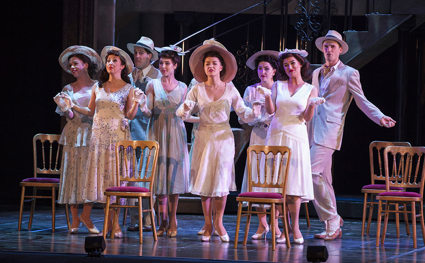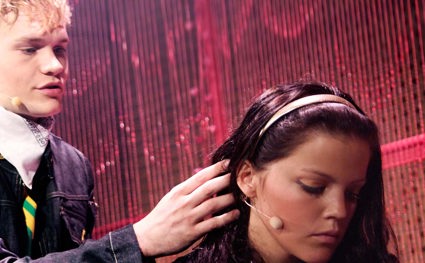Miniatures at the theatre
The world of theatre is exciting. It is also fascinating to support art with advanced technologies. However, even simpler technologies like microphones are valuable, miniature microphones being indispensable in the daily work of art.

“Theatre” is not even necessarily a facility. The theatre is where the acting takes place. So, the world of theatre encompasses anything from huge national institutions with many stages and hundreds in the audience to a single performer on a street corner. However, in most cases, some technology is applied to support the acting and the play, no matter the size of the venue. When it comes to sound, microphone technology is vital for the amplification of actors, props and music. As well as recording and reproduction of soundscapes, atmosphere sounds, sound effects, music, etc.
Sound design
The sound designer's job is to find the best solutions for a given play, and price often has a major impact on defining “best”. They must define the equipment for the play on a budget. In addition, they have several tasks in the creation and production of a theatrical piece. Initial recordings are carried out to create sound effects and music. Also, any sound pick-up on stage and in the pit must be considered, and solutions must be found. Getting microphones and wireless transmission systems for the actors/singers is also on the list. The signal processing and SR (sound reinforcement)-system design are, of course, other tasks that must be undertaken.
In conventional theatres, there is a budget to work from. However, the designer must often manage using the equipment available on the shelves, so hopefully, it is versatile and applicable.
Miniature mics, what can they do?
When it comes to microphones, you might think that size matters – and it does. In the theatre world, small is beautiful. A miniature microphone is easy to disguise and hide in a decoration or on a performer. It is worth remembering that small microphones exhibit an extremely wide frequency range. If we talk about omnidirectional mics, the low-frequency response will go all the way down to barometric pressure (0 Hz) - if a small vent in the design in the cavity behind the diaphragm is not applied.
Miking for voices
The voice is a vital instrument in theatre performances. When bodyworn microphones are used for amplification, much is done to create the illusion that no microphone is in use. So, the microphone is hidden on the actor in places where it is out of sight. Unfortunately, the voice spectrum varies depending on the available mounting position and the concealing materials. It requires an equalized or filtered microphone to obtain the perfect voice balance. If the microphone is too harsh in its basic sound, the processed sound also becomes harsh.
Miking the stage
Sometimes, the ensemble sound must be picked up. Instead of providing a microphone for each actor/singer, the solution may be one or two miniature microphones mounted as a BLM (boundary layer microphone). This principle works nicely if singers off-stage are supporting the onstage ensemble. It is easier to mic up a set-piece or a proscenium wall, eliminating the need for microphone stands. The advantage is that there are no comb-filtering reflections from the nearest surfaces and applying the BLM principle provides an increased directivity factor – in all directions.
Miking props
In some theatrical pieces, the props may have a role to play, making amplification an option. This can include door slamming, wheels squeaking, doorbells ringing, clocks ticking, etc. Again, the miniature microphone is the ideal solution to capture and amplify these sounds.
Sound art
Sound art exists both inside and outside the theatre. Here, sound (any sound) is recorded and presented, possibly in a reshaped version. The sound artist is always prepared for sound acquisition whenever an interesting sound that may suit an artistic purpose appears. The miniature microphone becomes handy because it is easy to carry and can get close to anything making sound. It may be the bees in the flowers, a rippling water source or anything in between.
Collecting soundscapes
Sometimes the sound designer records real-world sounds for inspiration. Soundscape analysis is a discipline that can be applied in many ways, such as sitting on a bench and letting the world pass by while recording it for later analysis. Having two miniatures placed at each end of the bench provides a basic environment that can be analyzed according to the standards or used as is for the background sound of the theatre piece.
Versatile instrument
The miniature microphone is a versatile instrument, that is suitable for a lot of jobs at the theatre. Find out more about DPA microphones for theatre.

